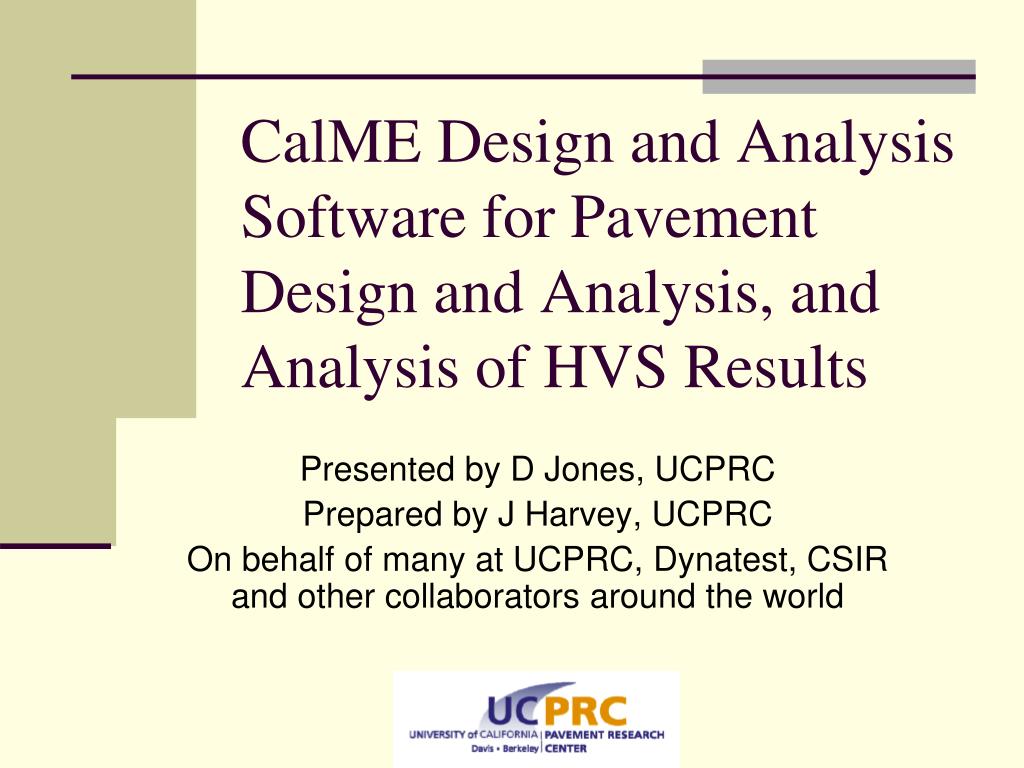
.png)
There are 19 not 15 design vehicles in four groups of design vehicles: Passenger Cars, Buses, Trucks, and Recreational Vehicles. The largest design vehicles are usually accommodated in freeway design. Each design vehicle has larger physical dimensions and a larger minimum turning radius than most vehicles in that class. Design vehicles are the selected vehicles with representative weight, dimensions, and operating characteristics used to establish highway design controls for accommodating vehicles of designated classes.
#CALTRANS PAVEMENT DESIGN SOFTWARE DRIVERS#
Besides the highway functional classification, other important design controls and criteria are as follows: Vehicles Design Vehicles, Physical Characteristics and performance Drivers and PedestriansĜharacteristics of Drivers and Pedestrians, Performance of Drivers and Pedestrians Traffic Design Speed, Design LOS, Traffic Volume, Design Hourly Volume, Peak Hour Factor, Design Designation, etc.įunctional Classification Traffic Data Terrain Locale Design Speed Lane width, rural X Lane width, urban Rural shoulder width, type Urban shoulder width, type Guard Rail offset Degree of curve Grades Bridge clearances (horizontal & vertical) Stopping sight distance Superelevation Widening on curves Rural design speeds Urban design speedsģ Design Vehicles Key controls in geometric design are the physical characteristics and proportions of vehicles of various sizes using the highway. This policy establishes a requirement for all transportation projects funded or overseen by Caltrans- in locations with current and/or future pedestrian, bicycle, or transit needs-to provide comfortable, convenient, and connected complete streets facilities for people walking, biking, and taking transit or passenger rail.In order to design highways, the designers must have an understanding of the basic design controls and criteria associated with the highways. Incorporating Broadband Facilities on the State Highway Right of Way.Broadband Middle-Mile Network Initiative.


Providing and maintaining information technology servers and data storage to meet the needs of the Districts.Providing Capital Outlay Support staff with computers, laptops, monitors, printers, plotters and other necessary tools.Providing technical support, training and guidance to District personnel for CADD roadway design software, drafting software, and engineering GIS applications.Establishing flexibility in Caltrans highway design standards and procedures, especially in the context of urban environments and multi-modal design.Providing technical support and design expertise on highway design issues related to motor vehicles, bicycles, and pedestrians.Assisting in the application of design standards and practices to facilitate the resolution of project development issues.Ensuring the adoption of “Best Practices” and design information to promote safety, statewide consistency, efficiency and quality.The Design Program innovates design solutions by: The Division of Design provides policies, procedures, guidance, technical assistance, training and equipment needed to develop and maintain a safe, sustainable, integrated and efficient transportation system.


 0 kommentar(er)
0 kommentar(er)
